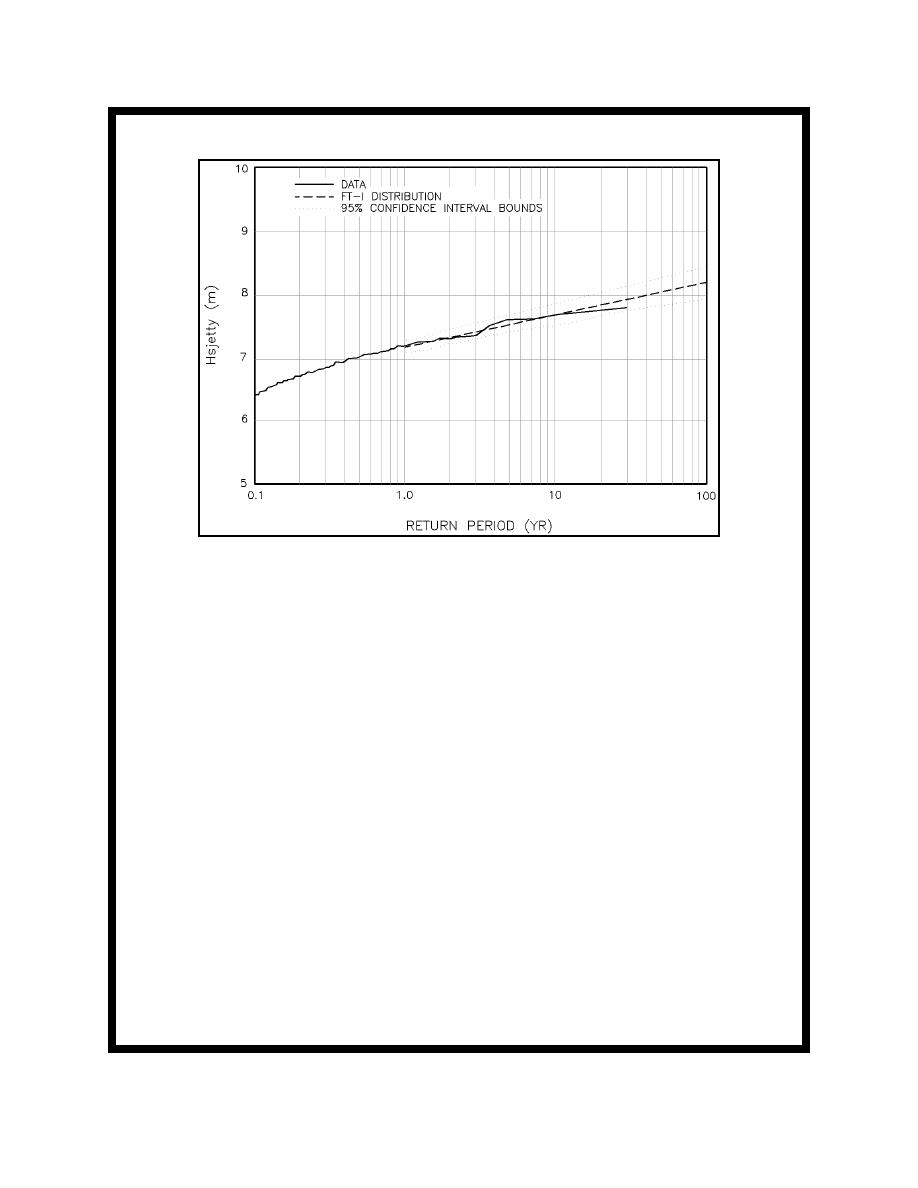
EM 1110-2-1100 (Part II)
30 Apr 02
Example Problem II-8-2 (Continued)
Figure II-8-27. Return period wave heights, 165 events, jetty head
Significant heights in Figure II-8-27 are representative of the extrapolated observed events, but they may have
some important limitations. Extreme values of Hsjetty are strongly dependent on water depth, and the highest tide
level considered in any of the 165 event cases was only at the 10-percent exceedance frequency. (This limit in
the tide levels considered was a practical consequence of the manual method being used. If the analysis were done
by computer, a much greater range of tide levels could have been included.) For longer return periods, the
probability of an event coinciding with a tide level higher than the 10-percent exceedance frequency increases.
This concern applies more to the jetty trunk, which is well inside the surf zone for design events, than the jetty
head.
It is important in design to be aware of the maximum values of Hsjetty which might be encountered. Estimates of
the upper bound value of Hsjetty were computed by the following two approaches:
(a) Parameters were determined as:
Tide level = maximum from Harris (1981) (Figure II-8-23)
= 1.45471.274 m
= +1.85 m MSL
= +1.85+1.36 m MLLW (using Table II-8-12) . +3.2 m MLLW
Storm surge = value estimated from extremal analysis of event storm surges for each Tr
(Figure II-8-20)
H0'/L0 = 0.01 (lower bound on event values in Table II-8-13)
Example Problem II-8-2 (Sheet 14 of 21)
II-8-48
Hydrodynamic Analysis and Design Conditions


 Previous Page
Previous Page
